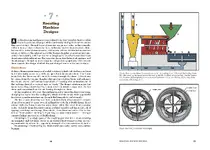Axel
New member
- Jul 15, 2015
- 32
- 0
From how I read it... a double wall drum configuration has to do with there being two layers that make up the drum.
from the very vague and confusing descriptions(with seemingly more grammatical errors than even my writing has) on manufacturers websites, I feel led to believe there is something like a single cast Iron outer layer surrounding a steel inner layer.
according to one manufacturer the cast Iron distributes the heat evenly while the steel allows for rapid changes in roast profile...
..back to the question:
What I'm trying to figure out is how the two layers("double wall") are physically set in relation to each other.
Are they in full contact with each other?
Or is there a space between the two layers for air circulation?
Or.. does the "double wall" really just refer to the front and rear face plate, which I noticed on the related machines are made of cast Iron.
seems like making the drum itself out of two separate layers would make very little sense if you want the inner drum layer to get decent heating action.
unless it's something like a copper coated frying pan...
I guess a simpler way of asking my question may be:
Are the flames from the burners basically just heating the carbon steel drum directly, like having a carbon steel frying pan on a stove?
or is there a cast Iron drum layer encapsulating the carbon steel layer, like having a smaller carbon steel frying pan inside of a cast iron pan which is on the stove?
Is there a diagram or photo of a double wall drum out there?
from the very vague and confusing descriptions(with seemingly more grammatical errors than even my writing has) on manufacturers websites, I feel led to believe there is something like a single cast Iron outer layer surrounding a steel inner layer.
according to one manufacturer the cast Iron distributes the heat evenly while the steel allows for rapid changes in roast profile...
..back to the question:
What I'm trying to figure out is how the two layers("double wall") are physically set in relation to each other.
Are they in full contact with each other?
Or is there a space between the two layers for air circulation?
Or.. does the "double wall" really just refer to the front and rear face plate, which I noticed on the related machines are made of cast Iron.
seems like making the drum itself out of two separate layers would make very little sense if you want the inner drum layer to get decent heating action.
unless it's something like a copper coated frying pan...
I guess a simpler way of asking my question may be:
Are the flames from the burners basically just heating the carbon steel drum directly, like having a carbon steel frying pan on a stove?
or is there a cast Iron drum layer encapsulating the carbon steel layer, like having a smaller carbon steel frying pan inside of a cast iron pan which is on the stove?
Is there a diagram or photo of a double wall drum out there?
Last edited:
